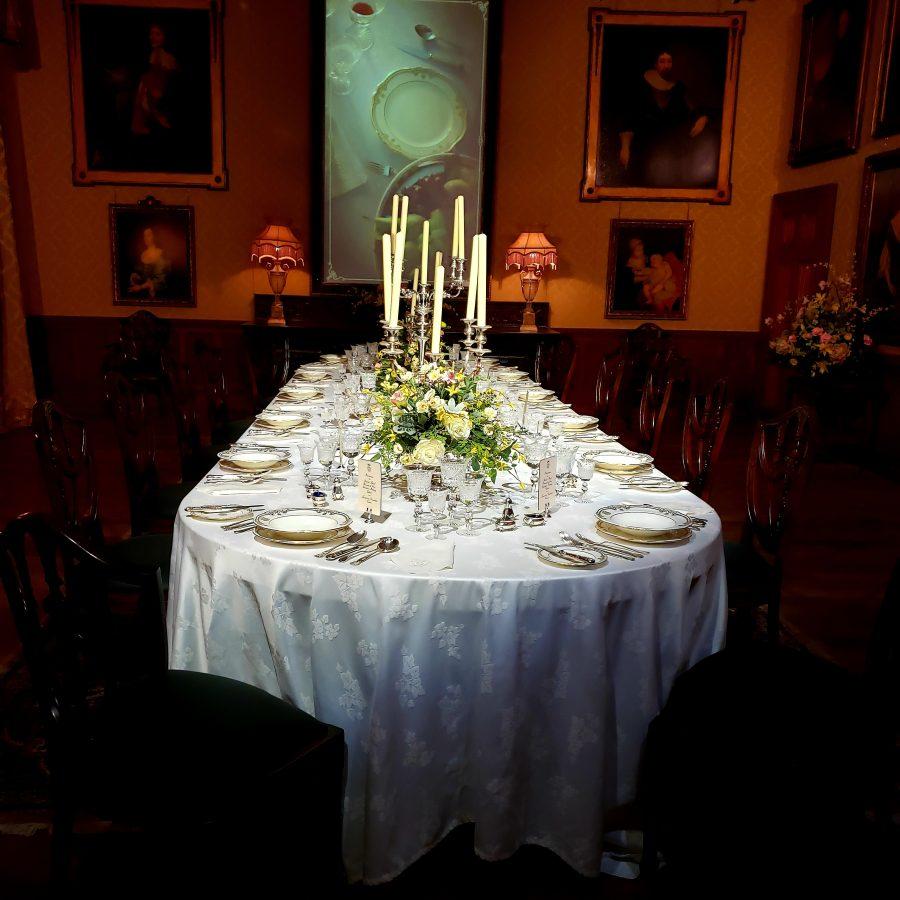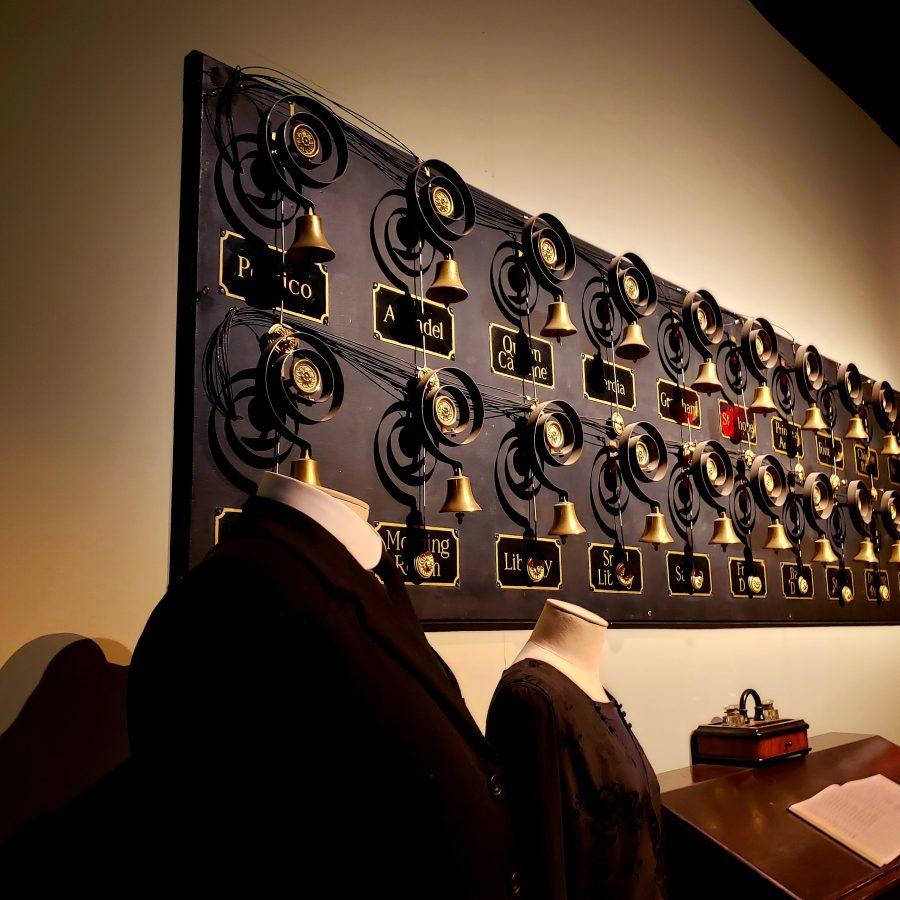A dream came true as I entered The Castle at Park Plaza in Back Bay Boston. I would be transported to another time through my love of Downton Abbey, a show that brought me into a world of history, fashion, luxury, and a pause from my otherwise busy life. The day was beautiful, the strangeness of a castle in the middle of a New England city not phasing me one bit. I went alone, sometimes it is easier that way. Then I can go at my own pace, really take the time to take in the intricate details of the visions before me.
The exhibit began in a large room with highlighting characters of the show such as Mrs. Patmore, the head cook, and Lady Mary, the oldest daughter of the Crawley family. This part was very modern and electronic, so I admit I did not spend much time in there. I wanted to see the costumes, the way people lived during the time, both upstairs and downstairs. I was a floral displays designer in a setting such as the home of Downton Abbey for five years while living in Asheville, North Carolina. Cornelius “The Commodore” Vanderbilt’s youngest son built a French Chateau in 1895. It was considered a country home, so not as opulent as the Vanderbilt homes in New York and Rhode Island, or the aristocratic English homes of families portrayed by the Crawley Family and the time of the early 1900’s when they had to struggle to keep their lands and homes.
Those who lived upstairs kept their dignity, while those who worked downstairs struggled to keep the house going as if the times were not changing, yet they were. The exhibit was fascinating because the set was set up in a way as if we were walking the very floors the actors did. One of my favorite rooms was Mr. Carson’s butler pantry which served as his office. Two mannequins wore Mr. Carson’s butler suit and the uniform Mrs. Hughes wore. They stood stoic and at attention as the characters they portrayed.
The room that allowed characters to know which room a summons was coming from highlighted the bells that ring when a member of the family rang for a cup of tea or needed help to change clothes. In this room, they had surveys that museum goers could take to see what position they would be offered if applying at an estate like Downton Abbey. I was offered a job as a cook, not what I would have wanted, but at least the head cook, Mrs. Patmore, would be someone I would not mind working for. The tour of downstairs continued into my favorite room (even though cooking is not my forte): the kitchen was large. There was a smelly pot set up to simulate the scents of a working kitchen.
The tour led into the opulent dining room complete with a set table with vintage silk flower arrangements. As a floral designer who has done this type of work, I was most fascinated with the Dutch style arrangement and each flower showcased within the arrangement. While working at Biltmore Estate, we used both silk and real, depending on the antique piece the arrangement would be placed in. The dining room itself was rich and full, the walls covered with painted portraits of the family.
Walking through the exhibit, I saw displays of the costumes worn for the show. It was a treat to look at them closely and see how hot some of them may have been to wear. Lady Rose’s debut as a young, eligible woman was presented in a beautiful, light pink dress. It flowed in the low wasted style. Lady Edith’s, the second daughter of the Crawley family, was so beautiful it stood alone on its own circular stage. The overall, most magnificent dresses were worn by Lady Mary. They demonstrated a sophistication that neither her two younger sisters’ nor cousin could elicit.
Wall of Rooms in the servants quarters. Each bell represents the location that the summons is coming from.






















































